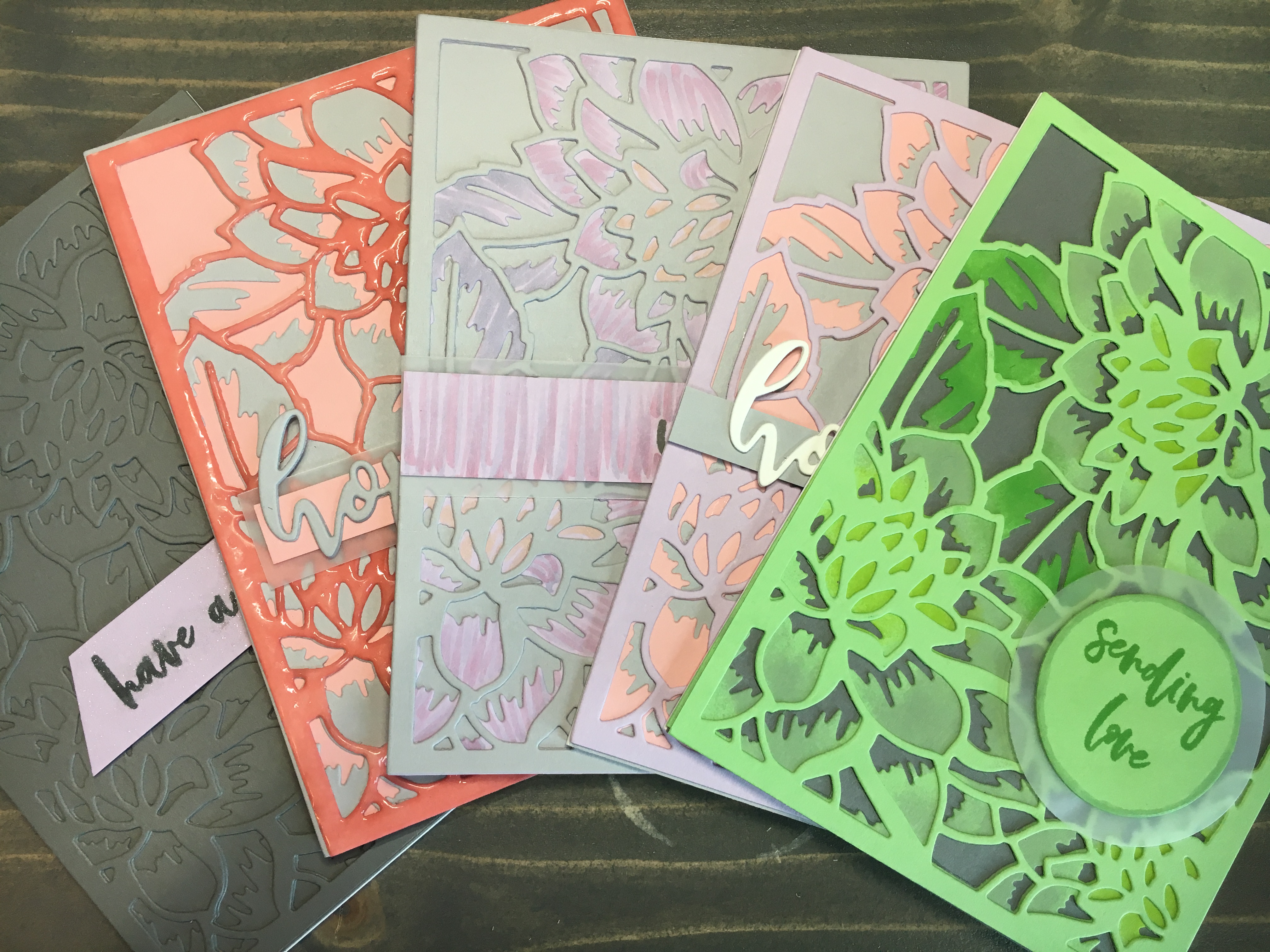Welcome! I love layered die cuts, but the cost can be a bit hard on the budget at times. Today, I have some fun and easy techniques for you that will help stretch your use of layering dies.

I’m using Altenew’s Layered Floral Cover die set. This set has 2 dies which, when layered, create a gorgeous background perfectly sized for an A2 card. For paper, I’m using Gina K cardstock in the following colors: Innocent Pink, Lucky Clover, Lovely Lavender, Soft Stone and Stormy Sky. Sentiments for finished cards came from either the Inked Flora stamp set, or Hope stamp set – both by Altenew.
Technique 1 - Single Color

The first, and easiest, way to use a layered die is to cut layers from the same colored cardstock. A monochromatic look is both elegant and timeless. I’ve paired my monochromatic background with a lavender sentiment strip and added a light shimmer with my Nuvo Aqua Shimmer pen.
Technique 2 - Get Colorful

Layering coordinating cardstock can be a great way to add new dimension to layered die cuts. For my sample, I’ve layered two pastel colors over a light grey background. Brighter colors can also provide great results. Try out different color combinations, you may be surprised at what you come up with! I finished this card with a mix of die cut and heat embossed sentiments. I want the background die to remain the focus, so a small sentiment is perfect.
Technique 3 - Ink Blend

For this technique, I started with both die cuts in the same color (Lucky Clover). I pulled out my coordinating Gina K Premium Dye Inks and mini sponge daubers. Using the top layer as a guide, I added ink to various portions of the bottom die cut. Leaves in Lucky Clover, flower petals in Soft Stone, and stamens in Key Lime. Perfection is not necessary here, at least for my taste. I left the color uneven and though my goal was to keep colors in their own areas, I was not too concerned when ink carried over into a different section. The end result brings pops of color within a cohesive design that brings the background new life.


Technique 4 - Color It!

Copic markers made the cut onto my card, but any markers would work. Use what you have, and experiment! As with the above technique, I used the top layer as a guide to help me determine where my coloring should go. I began with C1 on the petals, following with R81. I made short, quick strokes, loosely following the shapes of each section I was working within. Once the main petals were in, mapping out the leaves and stamens was easier. I used C3 for the leaves and YR20 for the stamens. For my sentiment strip, I used C1 and R81 again, which tied in the strip perfectly. I added a layer of vellum, cut just larger than the strip, to provide a subtle boarder. This card ended up stunning. It’s my favorite of the group!


Technique 5 - Emboss

My final technique for you starts with layers cut from two colors of cardstock, the base cut from the same color as the top layer (in my card, Innocent Pink was used). After stamping with Versamark, I heat embossed with a clear embossing powder. I worked on half the die cut at a time, heating and cooling each side before moving onto the next layer of embossing. I embossed three times on each side to obtain the thick layer I wanted. I finished off this card much as the others, adding a small sentiment so I did not detract from the background.


These 5 techniques are only the beginning when it comes to adding versatility! They work with larger, card sized background dies, as well as smaller accent layered dies. Try different colors of cardstock, ink, markers and even embossing powders. The sky is the limit!
If you are interested in checking out the dies I’ve mentioned today, link on over to altenew.com. Altenew has many layering dies available. They range from backgrounds to flowers and more. Cardstock and coordinating ink are from ginakdesigns.com. Gina K has great coordinating color options, available in cardstock, envelopes and ink.
Thank you for joining me today! Keep Calm and Craft On!


